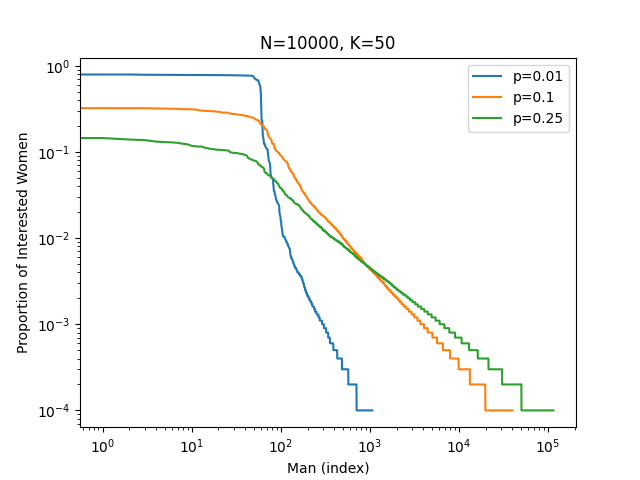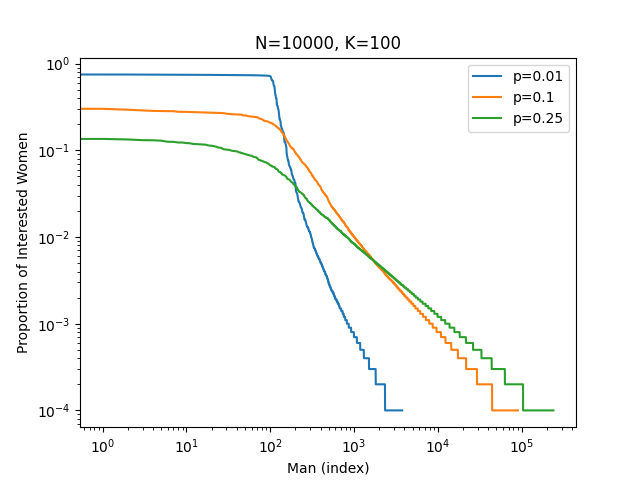Rylan Schaeffer

Resume
Research
Learning
Blog
Teaching
Jokes
Kernel Papers
Why Online Dating is (Almost Certainly) a Waste of Your Time
by {"name"=>"Rylan Schaeffer", "email"=>"rylanschaeffer@gmail.com", "twitter"=>"RylanSchaeffer"}
A few weeks ago, I went on a hike with two friends (6 feet apart, wearing masks, of course). One of my friends complained that online dating was rough for her, which surprised me. She’s smart, fit, attractive and has a great job, so I asked what the challenges were. Finding matches was straightforward. Getting the men to continue investing time after two or three dates was the sticking point.
I think I understand why this is, and the answer points towards one conclusion: if you’re a man less attractive than Adonis, or if you’re a woman looking for a committed relationship, online dating does not optimize your chances of success.
An easy way to see this is to consider the following (tremendously simplified) model. Suppose we have \(N\) men and \(N\) women all trying to find an opposite-gender partner. We assume men are interested in all women, but women use a budget constraint approach: each woman will only select \(K\) men to express an interest in. We further assume that women’s interests are not independent. To capture this, we introduce a parameter \(p \in [0, 1]\). Each woman will express an interest in \(pK\) new men as well as an interest in \((1-p)K\) men that other women have already expressed an interest in, where the probability that a woman expresses an interest in a man is proportional to the number of other women expressing an interest in that man.
Suppose we order men by the proportion of women interested in that man. What does such a distribution look like, and why does it tell us that online dating is a waste of time?

Note the log-log scaling! Turns out \(N\), the total population of men, doesn’t much matter. What matters is \(K\), the number of men a woman is willing to consider. The top \(\sim K\) men monopolize female interest. The parameter \(p\), which captures how independent female preferences are from one another, has a small effect on determining how close to \(K\) the final result is; if \(p=0\), then women all prefer the same men, and exactly the top \(K\) men dominate, whereas larger values of \(p\) push the cliff slightly past \(K\). The independence parameter \(p\) also controls how steeply female interest in men outside the top \(K\) decays. Again, note the log-log scaling!

What’s the takeaway? If you’re male and not in the top \(K\), then you will have very few women interested in you. Online dating is a waste of your time. If you’re female, the men who you express an interest in are overwhelmingly likely to be drowning in matches with other women. Unless you can offer something truly exceptional, they’ll move on. If you want a committed relationship, online dating is a waste of your time too.
tags: dating - online-dating - 2020